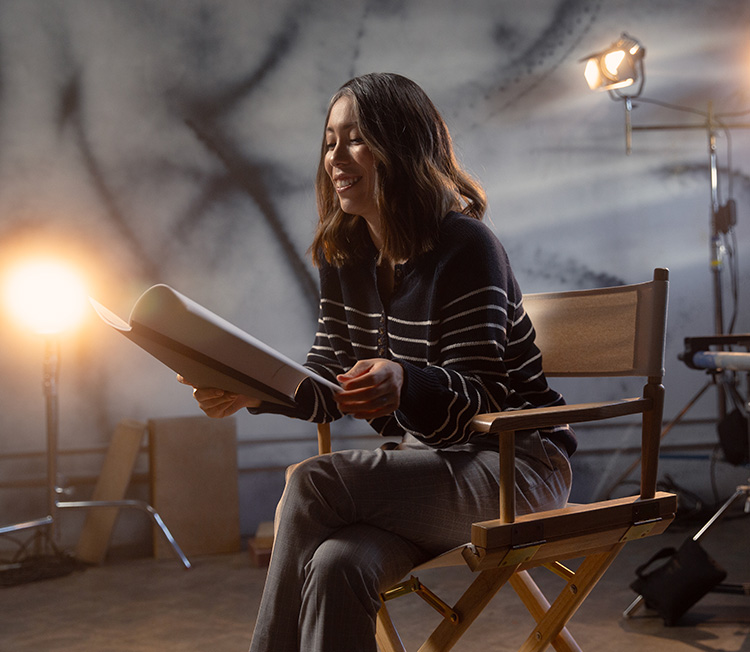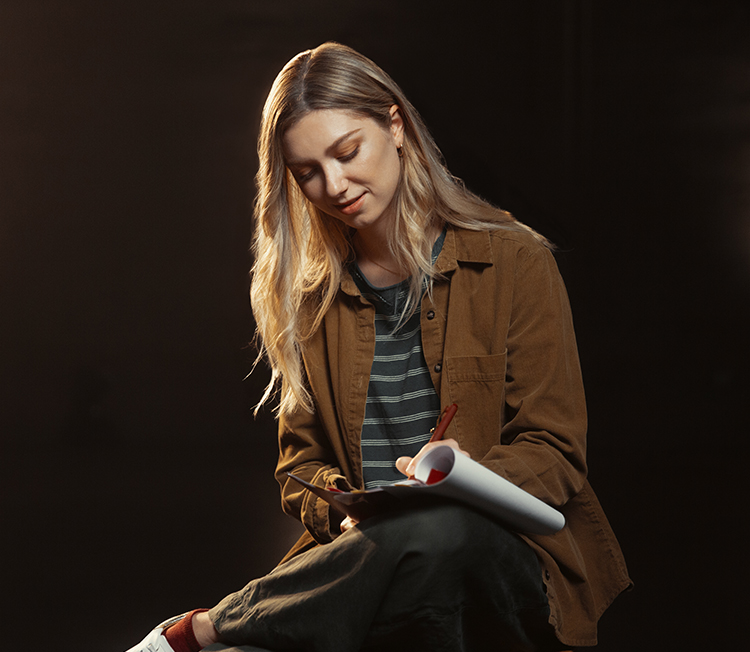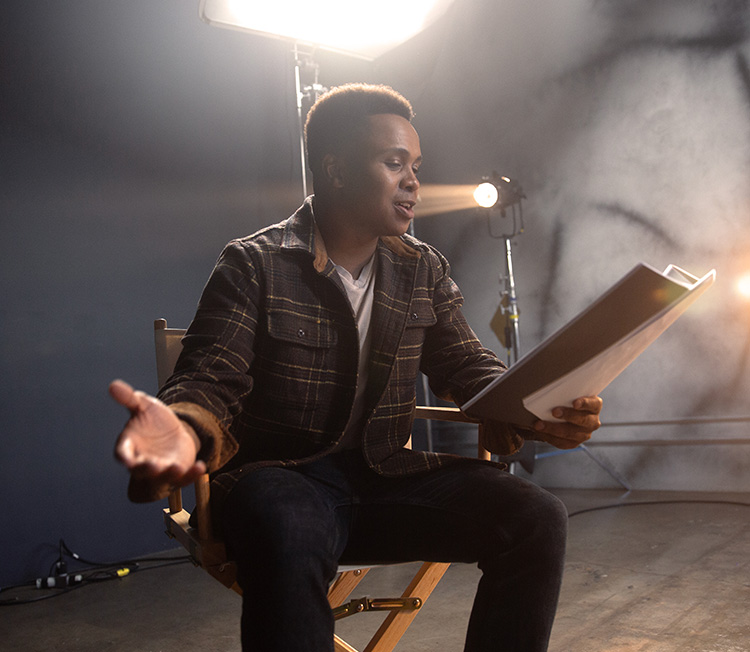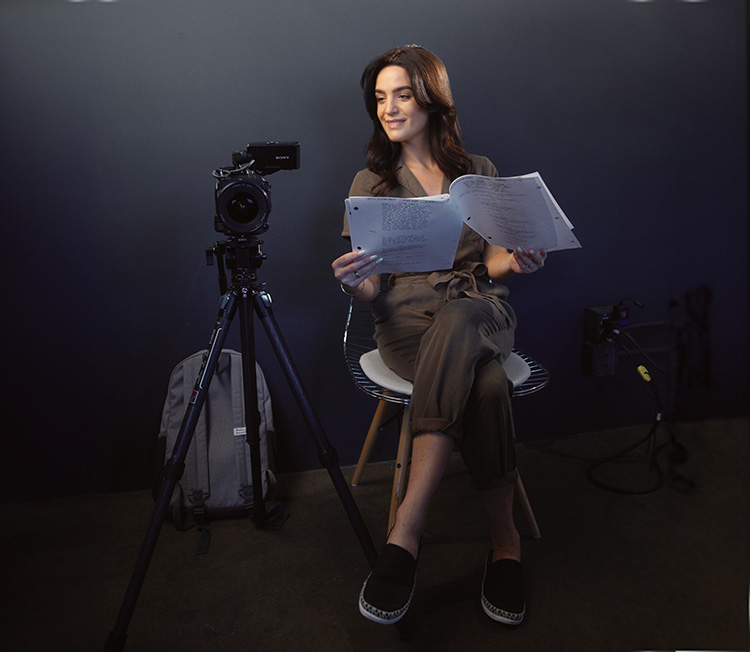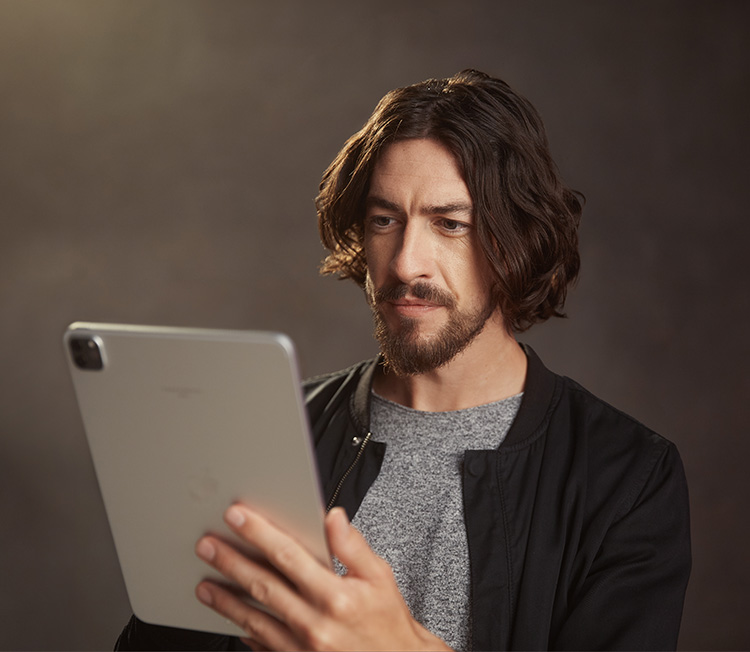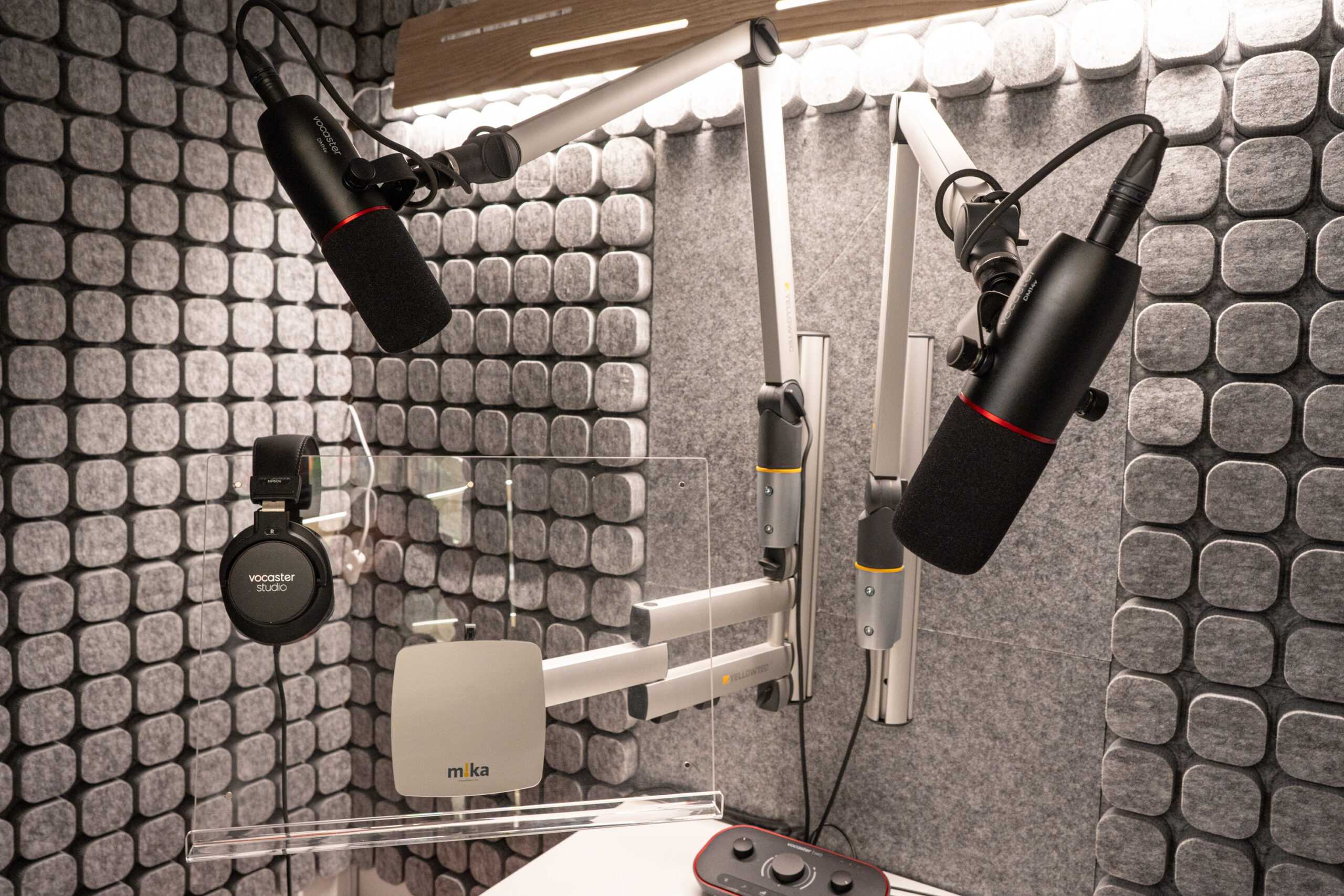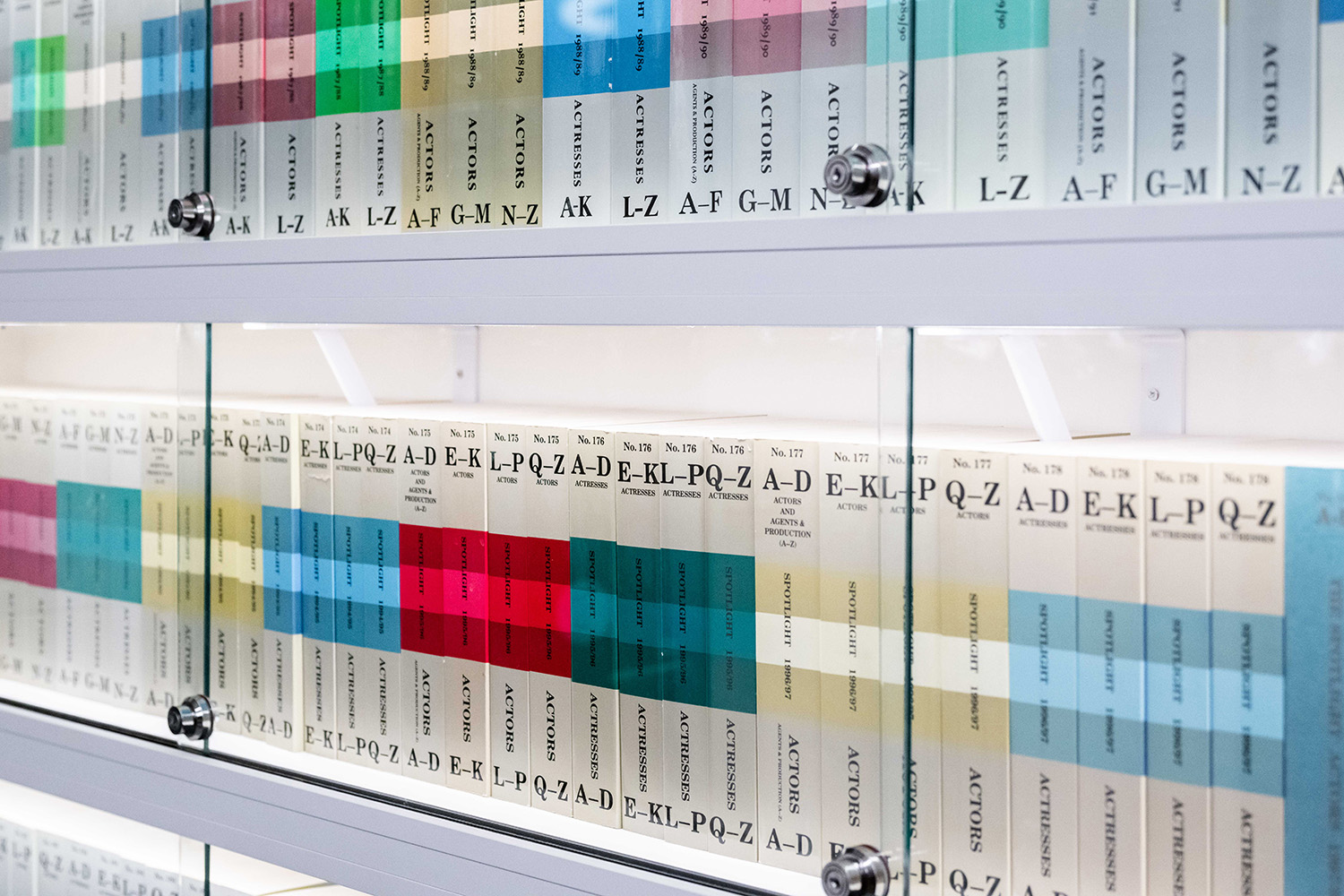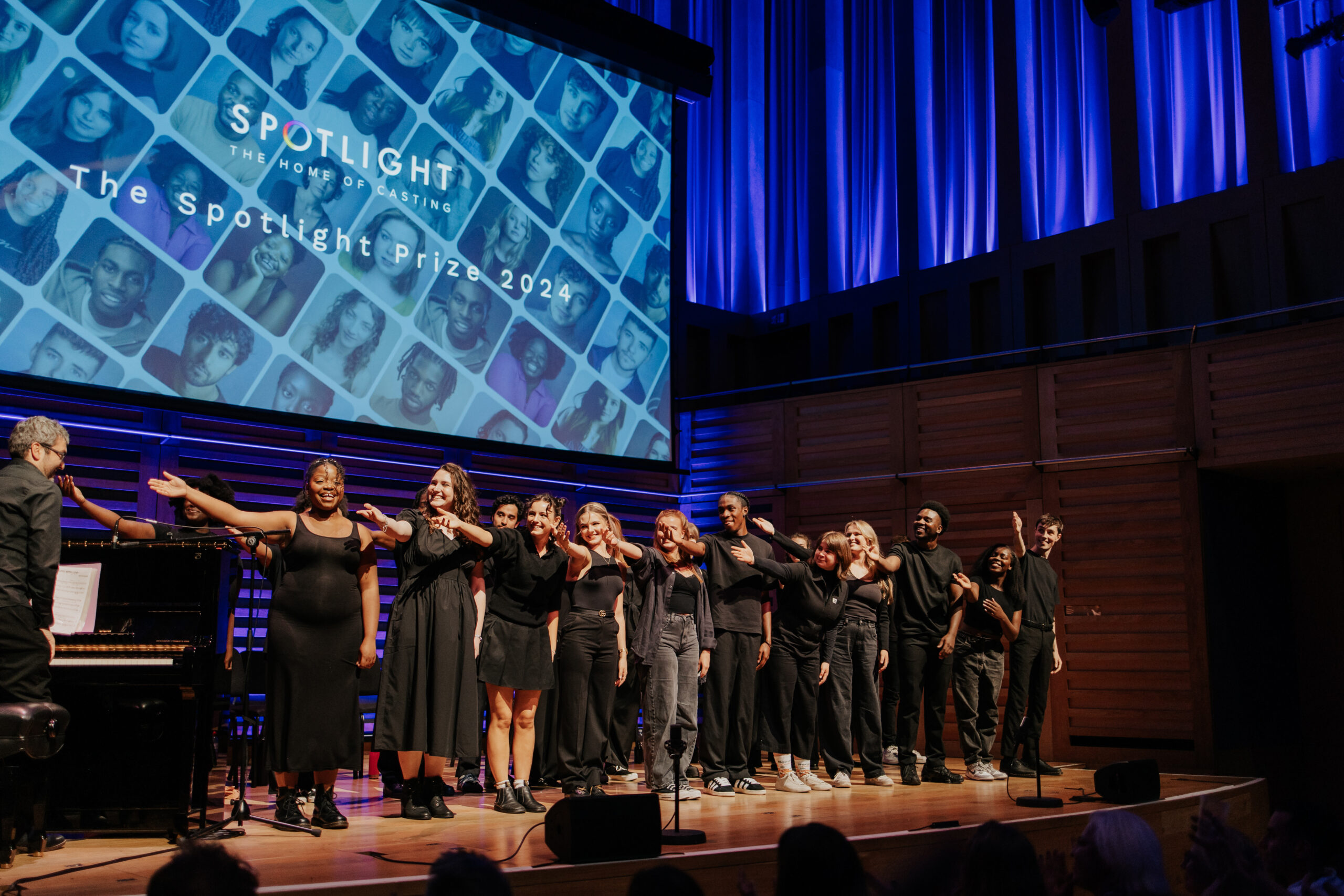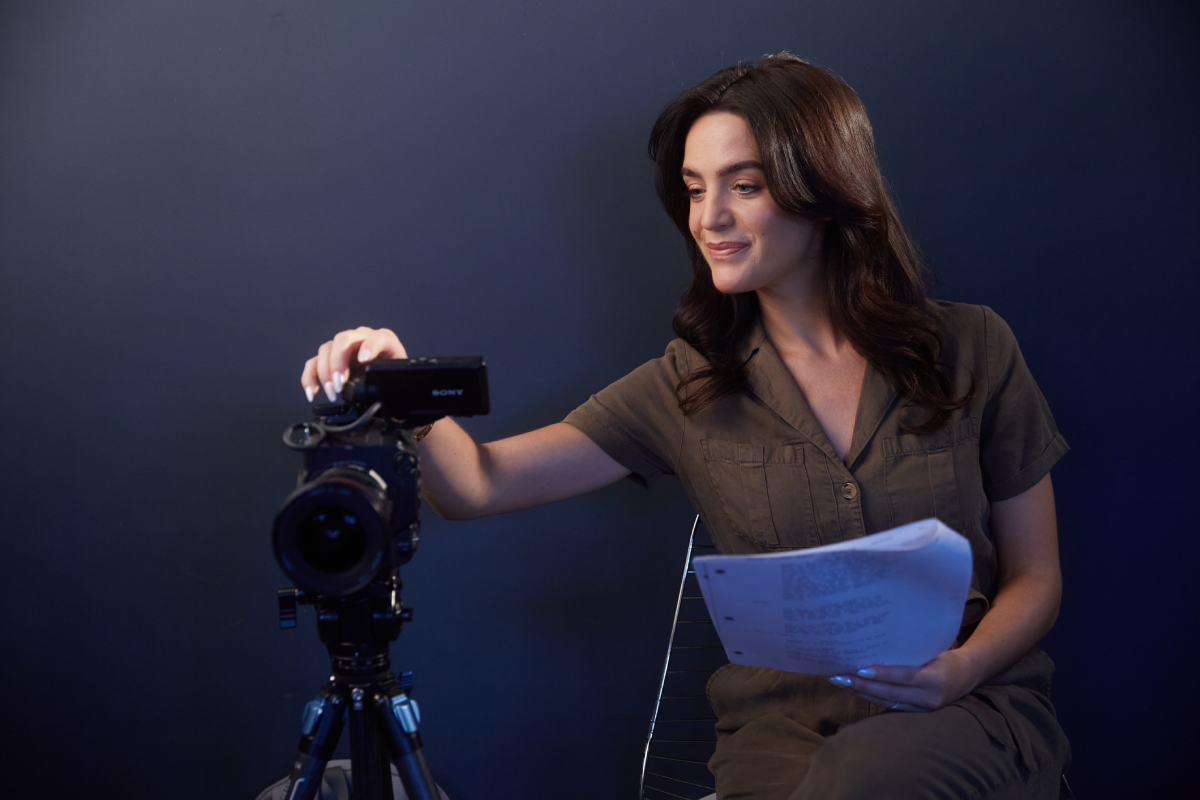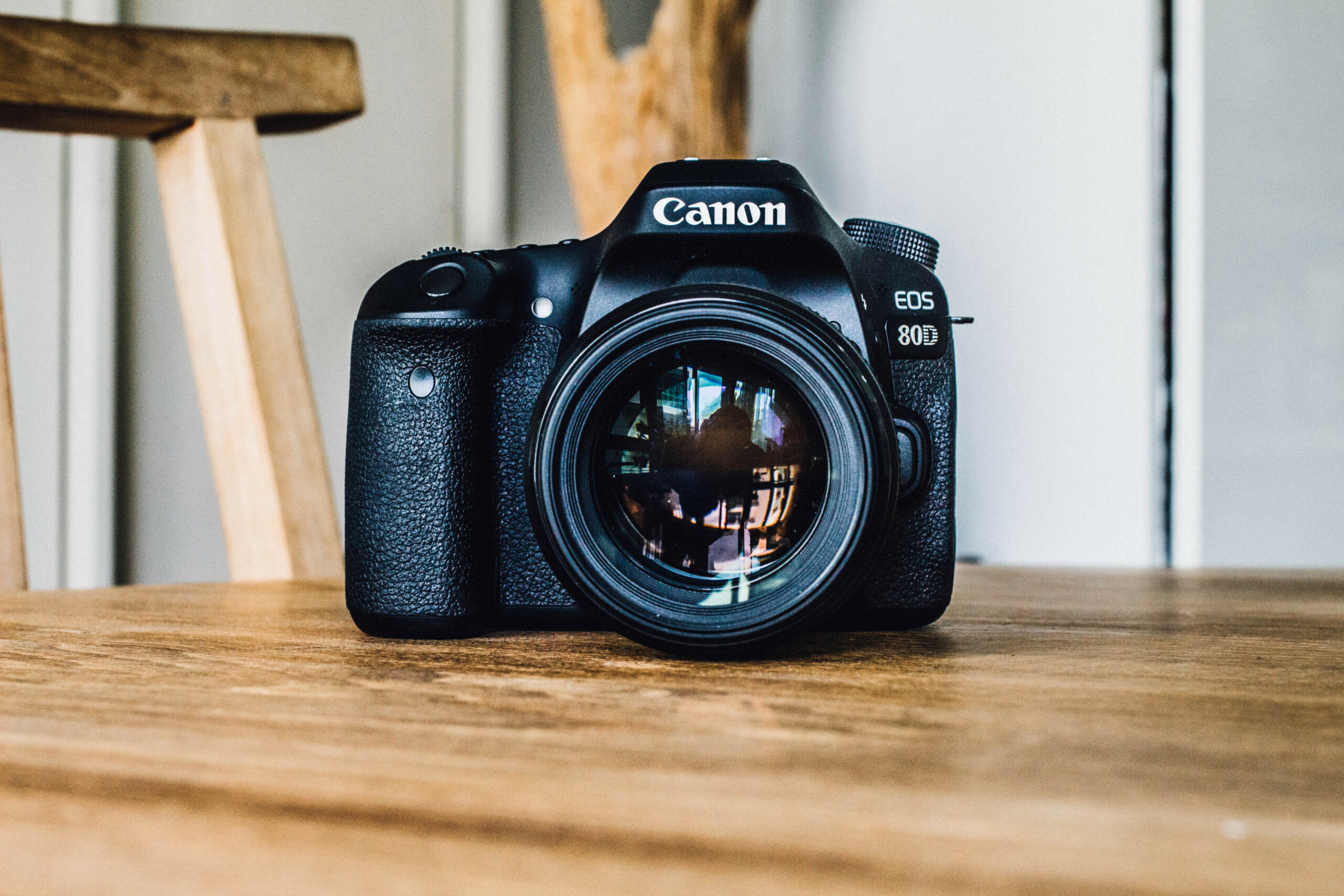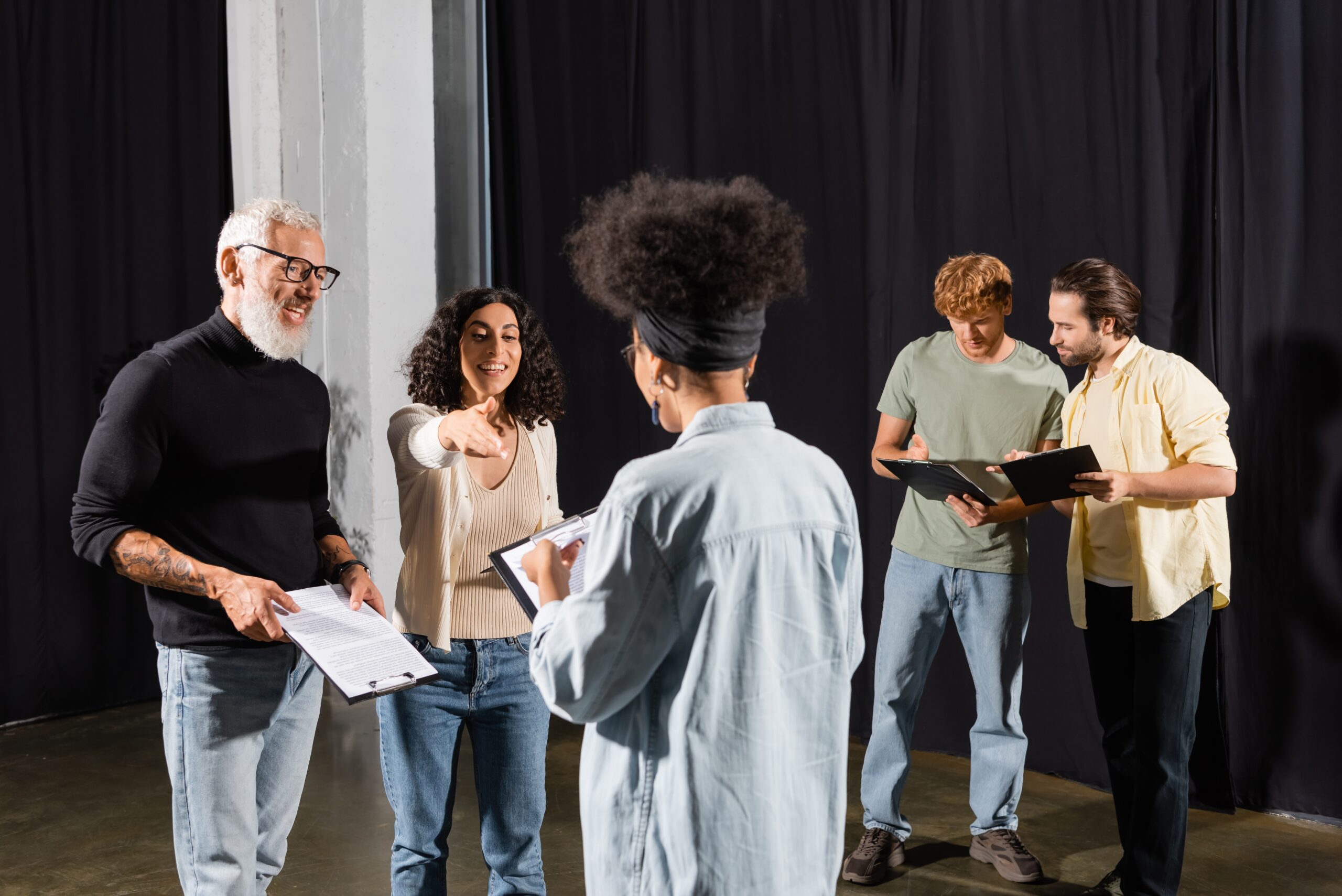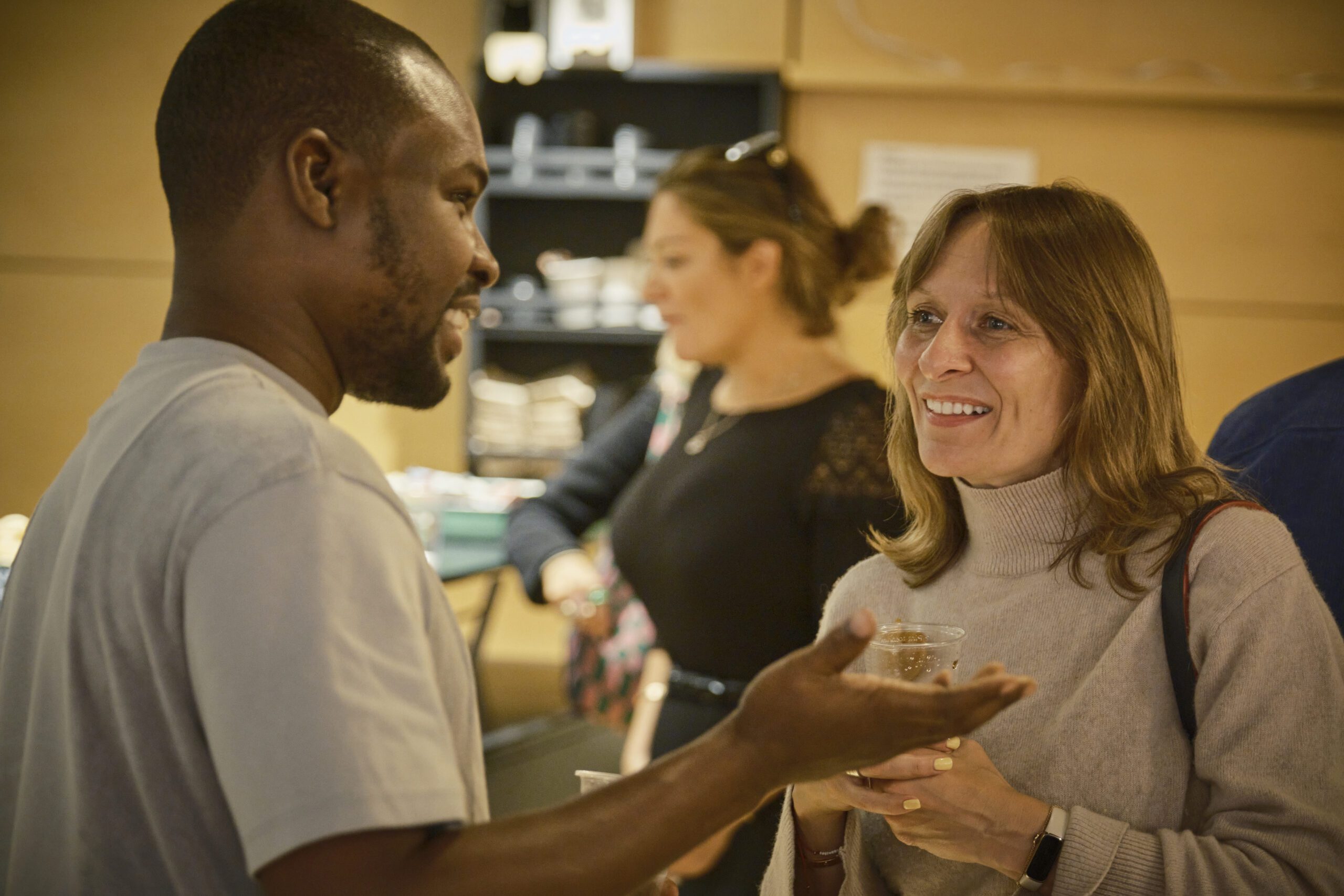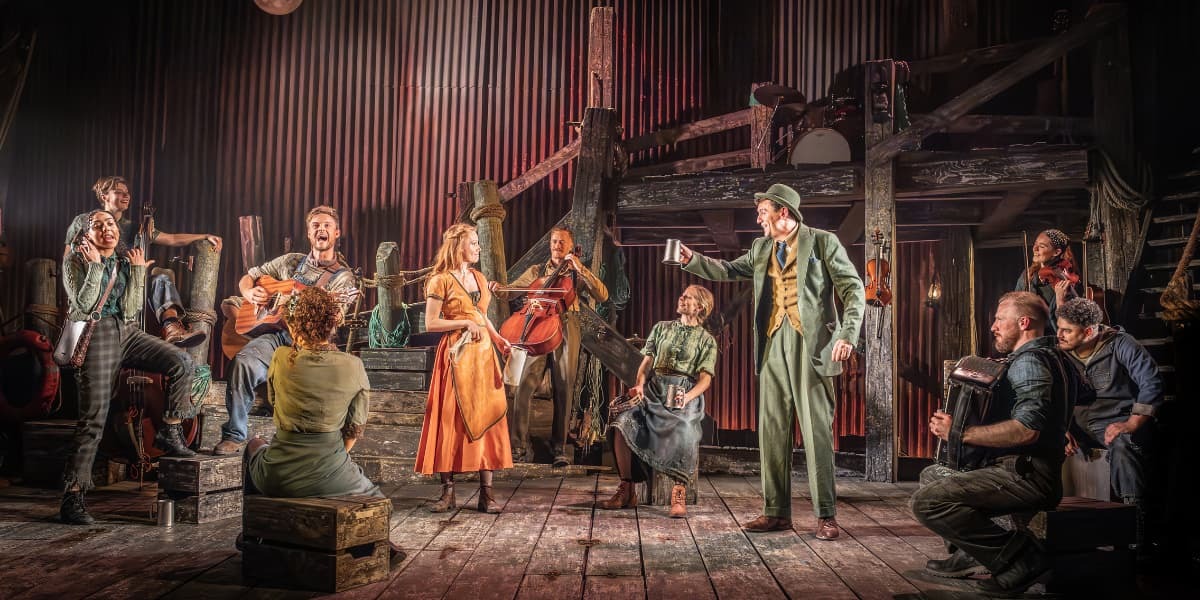Our guide to taking a suitable headshot when it’s not possible to get to a professional photographer.
Casting professionals want a clear representation of what you look like, presented as a well-framed, good quality headshot.
A good quality headshot is fundamental for any actor and a necessity for a Spotlight profile. First impressions really do count and often a casting professional’s decision to view your profile will depend on your main headshot i.e. the image they see first.
But when it’s just not possible to get a professional photographer to take a headshot for you, don’t panic. You can take a temporary, ‘amateur’ photo yourself, and substitute it with a professional shot as soon as possible after.
Here are our top tips for ensuring this photo is the best it can be:
- Casting professionals want a clear representation of what you look like, presented as a well-framed, good quality headshot with your face forward-facing and clearly visible.
- You should ask someone else to take your photo for you if possible – a friend or a family member. If not, then it’s perfectly fine to take a ‘selfie’ instead but ensure that you pose professionally for it, just like you would for a photographer.
- Your Spotlight profile is the equivalent of a CV meant to get you work so avoid using holiday photos and pictures of you with your friends, family, pets or celebrities, etc. Whilst these photos may be perfect for social media, they’re unlikely to impress casting professionals. We won’t accept them for publication either.
- When the casting professional sees your photo for the first time, it’s usually in a grid with dozens of other photos, all shrunk down to fit on a device screen. If your photo is blurry, low quality, too dark, too bright, or taken from too far away, its chances of drawing a casting professional’s attention are low.
Without a professional photographer, it’s up to you to make all the choices involved in taking a photo. We’ve separated the process into three stages: before, during and after taking the photo, with advice to consider at each stage. Try to be as professional as you can.
Before
Location
Choose a location with natural light and a plain background. Somewhere outside with a nice brick or rendered wall is perfect, or in front of a plain fence or large green bush (with no flowers) so there will be no distractions. If indoors, make sure it’s against a plain wall. A casting professional’s attention won’t be on your face if there’s a tree, bridge, door handle, or bathroom mirror behind you. Resist the temptation to showcase scenery, landmarks or your house.
Clothing and Make-up
Avoid wearing tops with logos and brand names, and keep it casual. Use the colour of your clothes to your advantage to draw attention to your eyes or make your hair colour stand out. Avoid distracting scarves or jewellery and keep make-up to a minimum. You want to look natural, so the photo will match the you who walks into that casting.
Props
Avoid using props such as hats and sunglasses as they will divert attention away from your face. If you regularly wear glasses then do include them in the photo, especially if you’re likely to wear them to a casting.
Expressions
Contrary to belief, it’s okay for you to smile in your photos. You don’t want them to be like a blank, boring passport photo. Later you can add professionally taken photos to your portfolio showing alternative expressions – though nothing too dramatic or silly! Be careful not to limit your roles by only portraying yourself in certain moods.
Other People
Make sure it’s just you in the photo. Casting professionals are unlikely to be interested in seeing your family or friends, or you posing with celebrities (even if they were co-stars). Avoid taking photos in busy locations, as this will likely result in other people being in the background.
During
Framing
When taking a headshot, aim to have the top of the photo just above your head, and your eyes positioned roughly one third of the way down from the top edge of the photo. Ensure you are central in the image. There’s no need to try and be artistic by photographing yourself through a wet window or peering through fabric. This may look nice, but it interferes with the photo’s main aim: showing what you look like.
Distance
Try not to zoom-in when taking the photo – it’s better to just bring the camera closer. Zooming in reduces the quality of the photo and makes focusing harder. If the photo is taken from too far away, casting professionals may be unable to see your features clearly. Too close, and the photo may not be in focus.
Focus
You should always be the focus of your photo, especially your eyes. Ensure your eyes are clear in the photo before taking it. If you are out of focus or blurred in your photo, then take another one. You want your features to be clearly visible to casting professionals. It’s sometimes effective to have the background just slightly out-of-focus, as this will soften sharp colours and divert attention to what’s in focus i.e. you.
Lighting
Natural lighting is recommended when taking photos. Make sure the source of light is not behind you, as this makes your face appear in darkness. Too-bright lighting can saturate your photo, resulting in faded colours and blank patches of white. A photo that is too dark will prevent your features (particularly your eyes) from being clearly visible.
After
Cropping
Cropping excess space off your photos will help centre attention on you. Cutting out unnecessary objects or background features will prevent them from being distractions. If you decide to crop another person out of a photo, ensure that you can do so without cropping out too much of yourself or leaving floating limbs, ears etc. in the image. Try not to crop your photos into a strange shape. Photos should preferably have an aspect ratio of 10 x 8.
Photoshopping
Photoshop and other photo editing apps and software should only be used to crop, remove red-eye and, very occasionally, to adjust the brightness and sharpness of the photo. Refrain from using Photoshop to remove blemishes from your face or to alter your colouring. You need to look like your photo.
Extras/Filters
Avoid adding filters, borders, text, or graphics to your photos. They are distracting and unnecessary. Keep your photo real.
Quality
Photos cannot be uploaded to your profile unless they are at least 500 x 500 pixels in size and have a dpi (dots per inch) of 72. However, higher quality than this is always preferable if it can be achieved. Expanding the size of your photo without increasing the dpi will result in reduced quality and, in severe cases, pixelation, so be mindful of this.
Photo credits
Copyright belongs to whoever takes the photo, even if they aren’t a professional photographer. So when you upload your photos to your Spotlight profile, ensure you credit whoever took it by entering their full name in the photographer field e.g. Jane Smith. If you took the photo yourself, you can put ‘Self Portrait’ instead.
Professional photographers
A professional profile requires a professional headshot so we always recommend using a photographer just as soon as you can. It’s also useful to look at professional photographer’s websites to see examples of their work and to give you some ideas about what your own amateur photo could look like. A good starting point is to look at photographers listed in Contacts and the Association of Professional Headshot Photographers (APHP) is another useful resource.
We have lots of advice about what makes for a good Spotlight headshot so do take a look. We also have a podcast episode where we discuss what makes for a good actor’s photo.
Most importantly, enjoy the experience! Having your photo taken should be fun, and if you’re relaxed and confident in your photo, this will show. Try different approaches, find one that works for you, and take as many photos as you need to get that perfect headshot.
If you’d like to find out more about making the shoot environment as safe as possible during COVID-19, you can read The APHP’s guidelines which is full of helpful advice for photographers and their clients.
If you need any other help then feel free to contact us through Twitter or email us at questions@spotlight.com!
Image by Hanson Lu via Unsplash.

